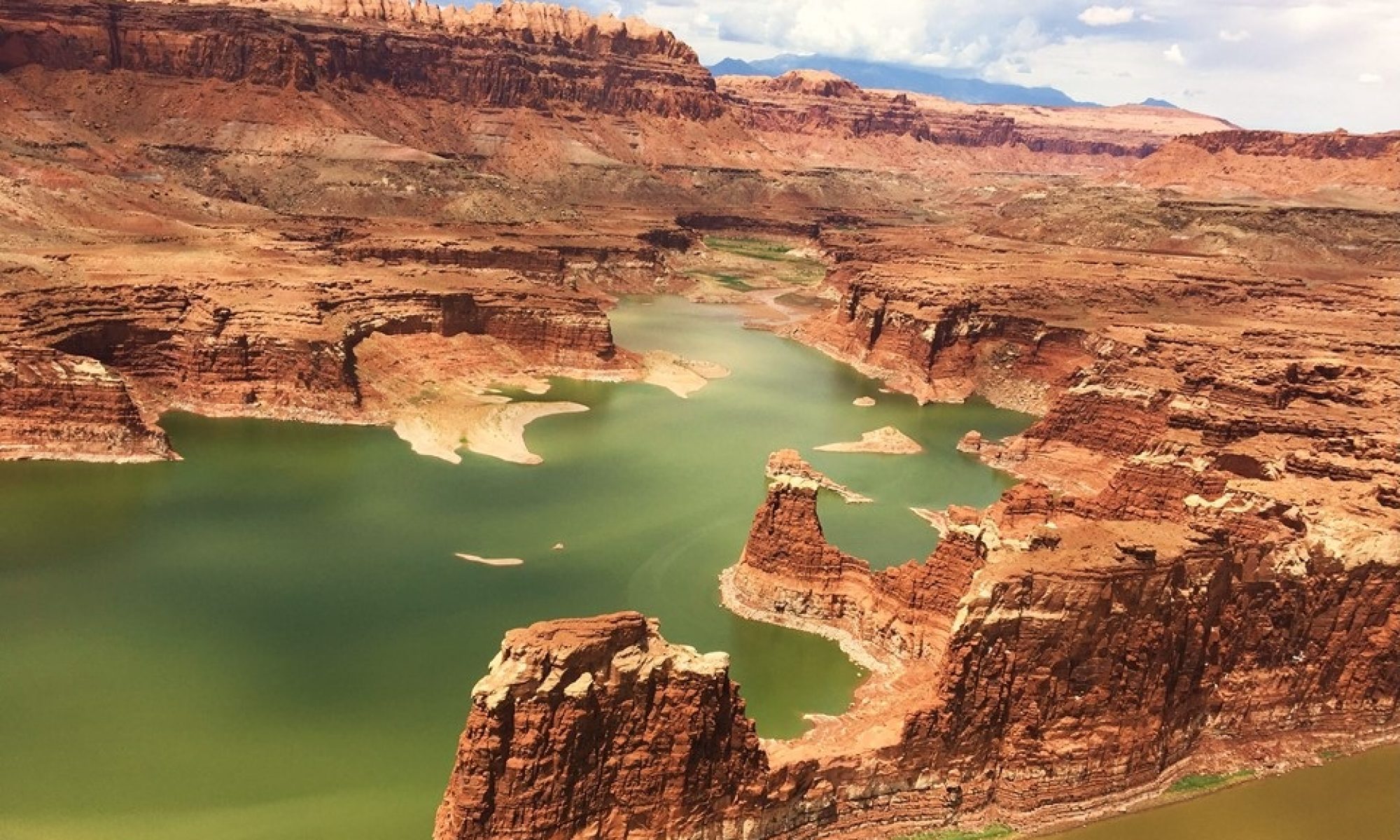January 2015
Ho Chi Minh City (Sai Gon), Vietnam
We arrive in Ho Chi Minh City via bus and embark on a panoramic city tour including the Old Saigon Post Office, a beautiful yellow building that replicates a French train station, and the Opera House, a traditional ornate building also built by the French during their colonial period.

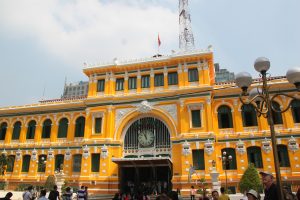
We also tour the Norte Dame Cathedral, the largest cathedral in all of Indochina. We then enjoy the hospitality of a local middle class family for lunch. Our hostess is a seamstress with three children and three generations living in her house. Her house is a typical 4 meter wide building that is two rooms long with a stairway in the middle that rises 5 stories high, providing 2 rooms with a bathroom under the stairs on each floor. She serves us an excellent 6 course meal of fried spring rolls, sticky rice, a chicken curry, a vegetable dish, a fish stew and fruit for desert. After lunch, we check into the Hotel Intercontinental of Sai Gon to get cleaned up and prepare for our evening’s entertainment.
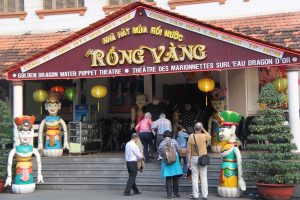
The evening starts with a trip to a Water Puppet Show at the Rong Vang Theater by the Golden Dragon Water Puppet Company – an art which is practiced today only in Viet Nam. The “stage” is a pool of water, and the puppets are controlled by sticks, pulleys and strings under the water. The show is one of everyday life in the villages of the rice fields showing planting, harvesting, and fishing and displays incredible creativity and artistry.
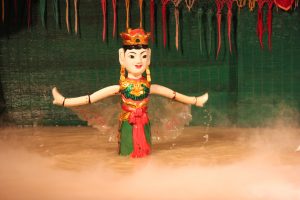
After the show, we go to a traditional Vietnamese restaurant for a dinner that locals might go out to dinner for.
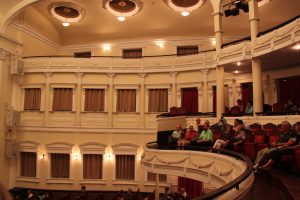
That leaves us time to walk to the Opera House where there is a show using bamboo that is a combination of gymnastics, dance and ballet. The show is in its last night at the Opera, and it “brings down the house” with its energy and incredible coordination. We finish the evening with a gentle stroll back to our hotel as the streets are abuzz with people enjoying the beautiful evening.
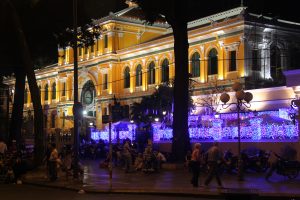
The next morning starts with a buffet breakfast before boarding the bus for a trip to the city’s Reunification Palace, formerly the Presidential Palace before the fall of the South Vietnam government in 1975. The Reunification Palace has preserved the rooms and offices of South Vietnam’s government as the French originally designed it, and as the Americans supported it. The building are compete with the bunkers and tunnels that provided former President Diem’s escape during the coup that deposed him and eventually resulted in his death.
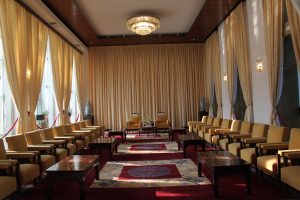
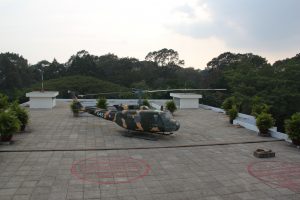
After a brief return to the hotel, we re-boarded the bus for a trip to a Vietnamese restaurant for lunch followed by a trip north out of Sia Gon to the area of Chu Chi where the high ground in the bent of the river provided a setting for extensive tunneling by the locals. Although the tunnels were began during the reign of the French as a way for the local to avoid their oppressors, they were extensively added to during the years of the Vietnam War. The USA’s approach to dealing with these tunnels was to carpet bomb them from B-52 drops, leaving the ground surface by 1972 a cratered, barren area. However, the original jungle and rubber trees have grown back, and the tunnels have been preserved, along with examples of booby-traps and life underground, as an historical site. We entered a number of the tunnels, which are characterized as extremely “tight” for average-sized Americans, requiring walking in a crouch while hunched completely over.
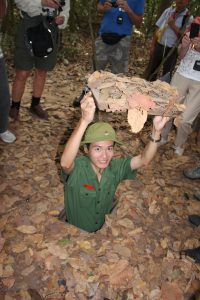
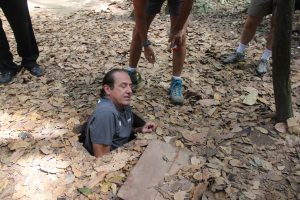
After our trip to the tunnels, we returned to the hotel to prepare to go out to a restaurant for our Farewell Dinner, another 7 course meal of traditional Vietnamese food, with a series of toasts and friendly goodbyes. The next morning would see us leave for the airport early, and begin our long series of air flights back home.
